
Sailboat Racing - 10 Basic Rules
RC sailboats in particularly - is a self-regulated sport. A fundamental principle of sportsmanship is that when a competitor breaks a rule he will promptly take a penalty, which may be, depending on the nature of the infraction, either performing one or two turns.
A basic principle for which the rules of sailing are applied is to avoid collisions. They can also be seen as a fundamental tool to guarantee everyone entertainment as part of a sailing race, which includes a departure, a performance and an arrival.
There are general rules that every sailor should keep in mind:
- Always sail with common sense, safety, and good sportsmanship.
- Right-of-way is not an excuse to cause a collision. All boats (sailors) are required by rule to avoid a collision if possible.
- A sailboat in motion shall keep clear of a stopped Sailboat.
- After finishing your race, keep clear of the course and of other boats still racing.
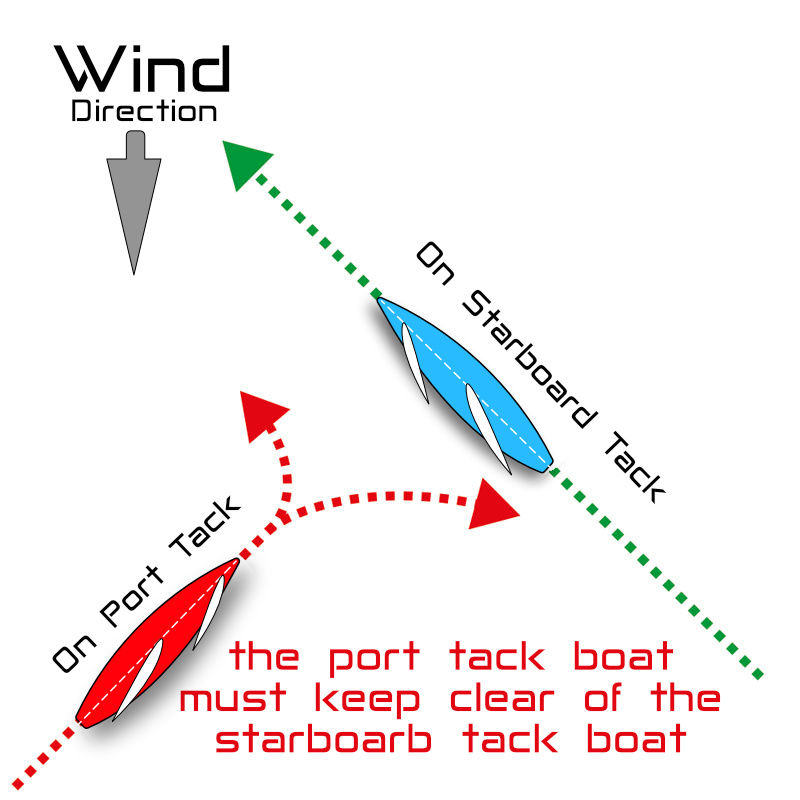
1. WHEN SAILBOATS ARE ON OPPOSITE TACKS, THE PORT TACK BOAT MUST KEEP CLEAR OF THE STARBOARD TACK BOAT.
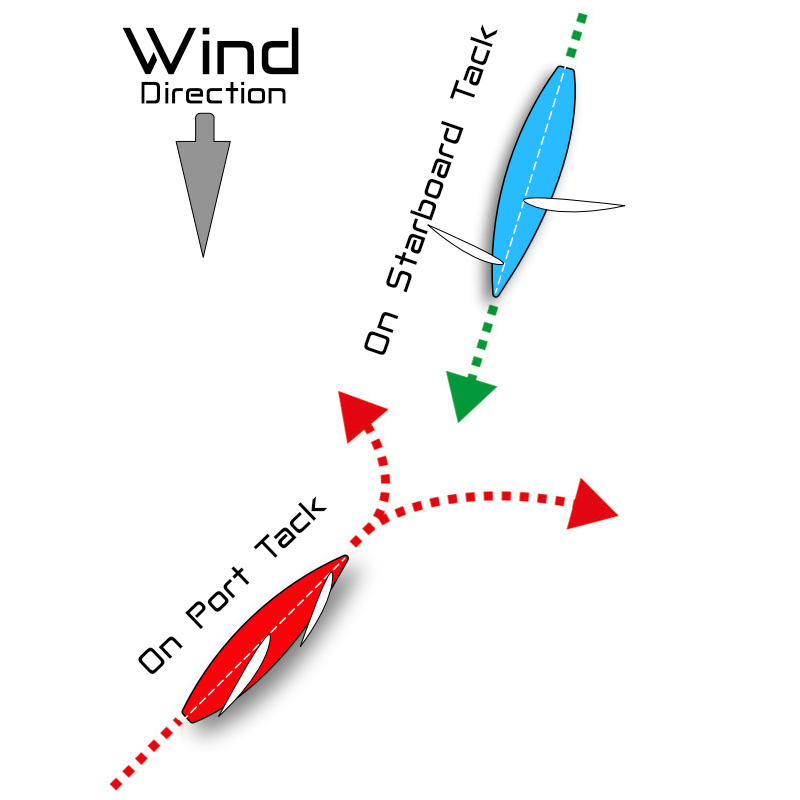
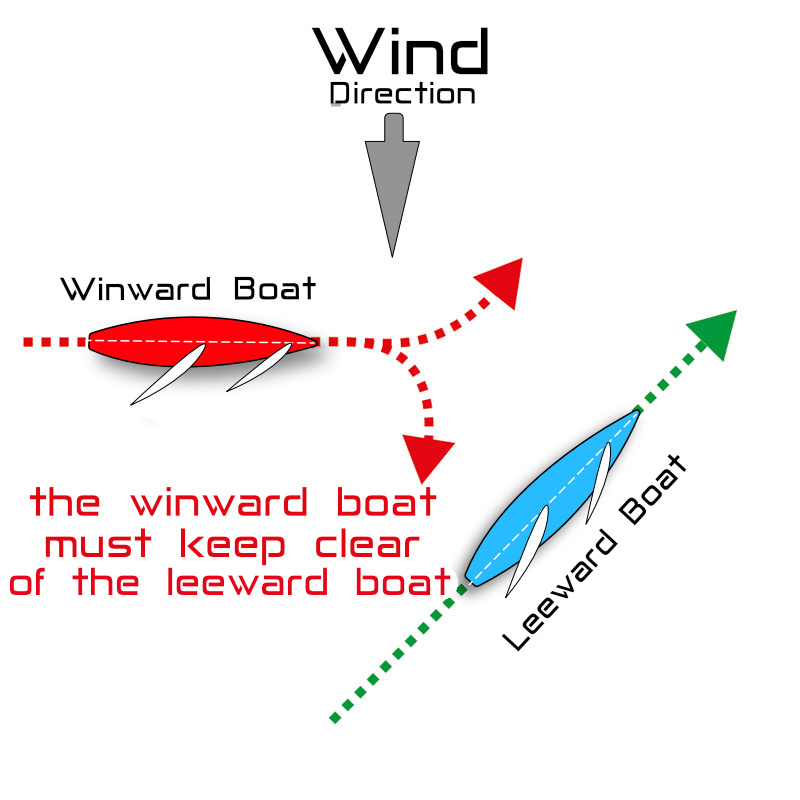
2. ON THE SAME TACK AND OVERLAPPED, THE WINDWARD BOAT MUST KEEP CLEAR OF THE LEEWARD BOAT.
3. ON THE SAME TACK AND NOT OVERLAPPED, THE BOAT CLEAR ASTERN MUST KEEP CLEAR OF THE BOAT CLEAR AHEAD. ANY VESSEL OVERTAKING ANOTHER SHALL KEEP CLEAR.
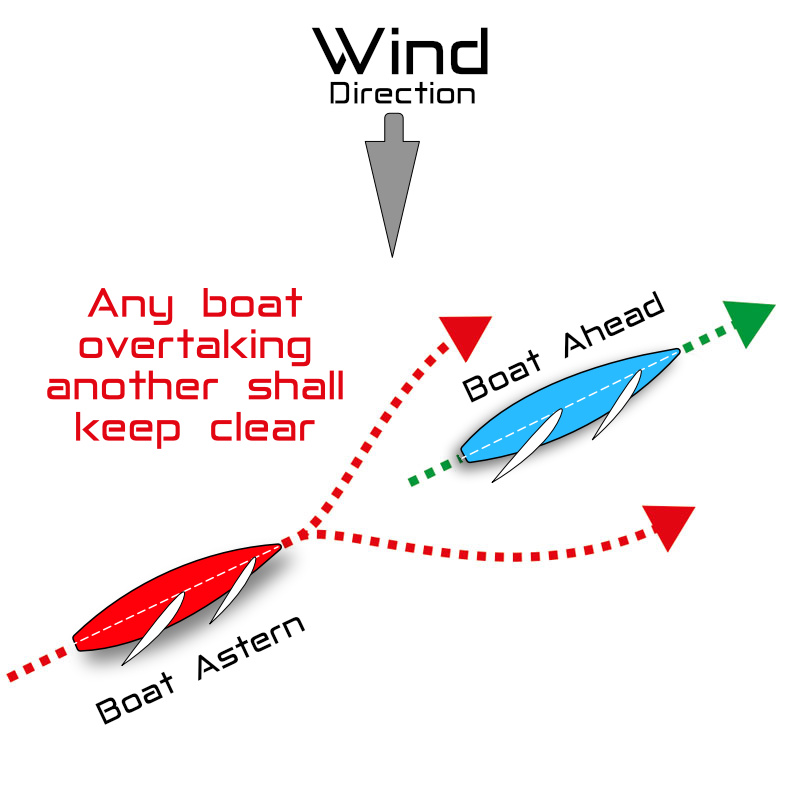
4. A boat that begins the process of tacking or gybing must keep clear of boats that are on a tack, not tacking or gybing. If you are tacking you lose your rights until you are settled on a close-hauled course.
5. When a boat acquires the right-of-way (such as gybing her boom to a starboard tack), this boat must initially give the other boats room to keep clear. After a brief period of time, the boat can exercise her newly acquired rights.
6. When a right-of-way boat changes course (even a little bit), this boat must initially give the other boat room to keep clear. You cannot quickly change your course to force another boat into a foul.
7. If a boat comes from behind you and begins to overtake your boat from the leeward side, and if that boat is within 2 boat lengths off your leeward side as it begins to overlap you, that boat is not allowed to sail above its proper course. In other words, it is not allowed to push you up into the no-go zone.
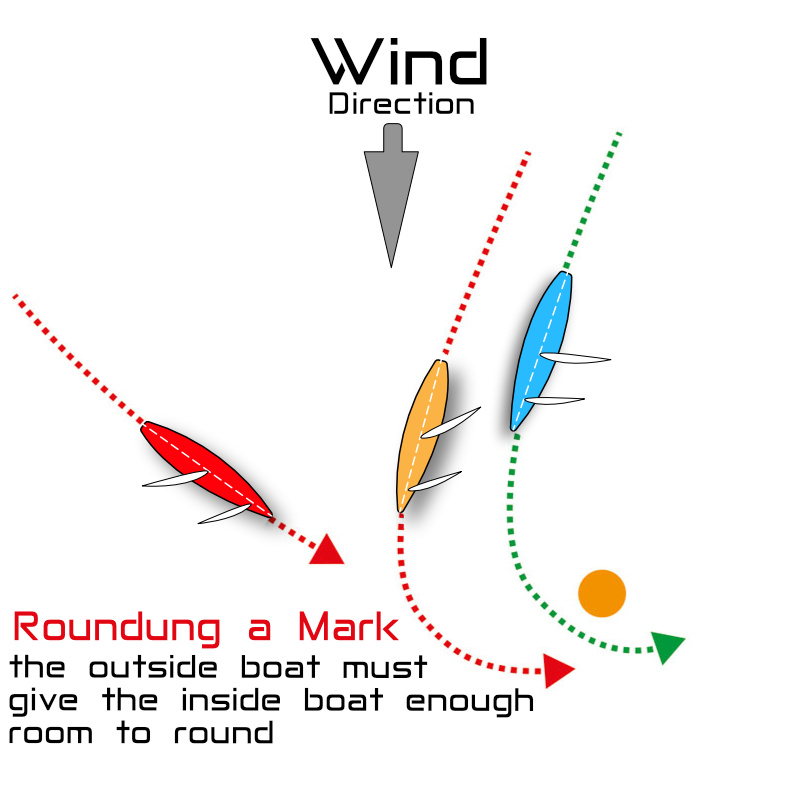
8. WHEN BOATS ARE OVERLAPPED APPROACHING A TURNING MARK, THE OUTSIDE BOAT MUST GIVE THE INSIDE BOAT ENOUGH ROOM TO ROUND, PROVIDED THAT THE OVERLAP WAS ESTABLISHED BEFORE THE LEAD BOAT ENTERED THE 4 BOAT-LENGTH ZONE.
This rule does not apply at a starting mark as boats are approaching the start. The inside overlap boat does not have rights to room at the starting mark.
This rule does apply at the finishing mark. A boat that has established inside overlap prior to the 4-boat-length zone must be given room to finish.
9. You must round all marks in the direction specified (by race committee), and you must not touch a mark.
10. A boat may take a two-turns penalty (720 degrees) when she may have broken one or more rules, (except #9 above which is one full penalty turn).
How a boat must conduct her penalty?
After getting well clear to avoid impeding other boats, making the required number of turns in the same direction, each turn including one tack and one gybe. When? As soon after the incident as possible.
When a boat takes the penalty at or near the finishing line, she shall sail completely to the course side of the line before finishing.

The most important behaviors to adopt when sail racing are: to carefully watch out for other boats; don’t push the rules too hard; give way if another sailboat has the right of way.
Best way to master these rules is to practice while sailing.